Sodium Saccharin
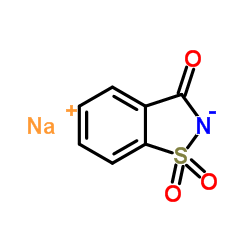
Sodium Saccharin structure
|
Common Name | Sodium Saccharin | ||
|---|---|---|---|---|
| CAS Number | 128-44-9 | Molecular Weight | 205.17 | |
| Density | N/A | Boiling Point | 438.9ºC at 760 mmHg | |
| Molecular Formula | C7H4NNaO3S | Melting Point | >300°C | |
| MSDS | Chinese | Flash Point | 219.3ºC | |
Use of Sodium SaccharinSaccharin sodium is an orally active, non-caloric artificial sweeteners (NAS). Saccharin sodium has bacteriostatic and microbiome-modulating properties[1]. |
| Name | o-Benzoic Sulfimide Sodium Salt |
|---|---|
| Synonym | More Synonyms |
| Description | Saccharin sodium is an orally active, non-caloric artificial sweeteners (NAS). Saccharin sodium has bacteriostatic and microbiome-modulating properties[1]. |
|---|---|
| Related Catalog | |
| References |
| Boiling Point | 438.9ºC at 760 mmHg |
|---|---|
| Melting Point | >300°C |
| Molecular Formula | C7H4NNaO3S |
| Molecular Weight | 205.17 |
| Flash Point | 219.3ºC |
| Exact Mass | 204.980957 |
| PSA | 77.94000 |
| LogP | 1.08240 |
| Vapour Pressure | 1.77E-08mmHg at 25°C |
| InChIKey | WINXNKPZLFISPD-UHFFFAOYSA-M |
| SMILES | O=S1(=O)N=C([O-])c2ccccc21.[Na+] |
| Storage condition | 0-6°C |
| Stability | Stable. Incompatible with strong oxidizing agents. |
| Water Solubility | >=10 g/100 mL at 20 ºC |
Synonym:Sodium saccharin; 1,2-Benzisothiazol-3(2H)-one, 1,1-dioxide, sodium salt; Saccharin, sodium salt; Saccharin soluble Section 2 - COMPOSITION, INFORMATION ON INGREDIENTS
Risk Phrases: None Listed. Section 3 - HAZARDS IDENTIFICATION EMERGENCY OVERVIEW
Not available. Potential Health Effects Eye: May cause eye irritation. Skin: Low hazard for usual industrial handling. Ingestion: The toxicological properties of this substance have not been fully investigated. Inhalation: Inhalation of dust may cause respiratory tract irritation. Chronic: Several studies in rats & mice have linked sodium saccharin to bladder tumors, but the mechanism believed to induce cancer in those animals does not appear to occur in humans. Rats & mice have a different urinary pH than do humans. Section 4 - FIRST AID MEASURES Eyes: Flush eyes with plenty of water for at least 15 minutes, occasionally lifting the upper and lower eyelids. Get medical aid. Skin: Flush skin with plenty of water for at least 15 minutes while removing contaminated clothing and shoes. Get medical aid if irritation develops or persists. Ingestion: Get medical aid if irritation or symptoms occur. Inhalation: Remove from exposure and move to fresh air immediately. Get medical aid if cough or other symptoms appear. Notes to Physician: Section 5 - FIRE FIGHTING MEASURES General Information: As in any fire, wear a self-contained breathing apparatus in pressure-demand, MSHA/NIOSH (approved or equivalent), and full protective gear. Extinguishing Media: Use water spray, dry chemical, carbon dioxide, or chemical foam. Section 6 - ACCIDENTAL RELEASE MEASURES General Information: Use proper personal protective equipment as indicated in Section 8. Spills/Leaks: Vacuum or sweep up material and place into a suitable disposal container. Avoid generating dusty conditions. Provide ventilation. Section 7 - HANDLING and STORAGE Handling: Use with adequate ventilation. Minimize dust generation and accumulation. Avoid contact with skin and eyes. Avoid ingestion and inhalation. Storage: Store in a tightly closed container. Store in a cool, dry, well-ventilated area away from incompatible substances. Section 8 - EXPOSURE CONTROLS, PERSONAL PROTECTION Engineering Controls: Good general ventilation should be sufficient to control airborne levels. Exposure Limits CAS# 128-44-9: Personal Protective Equipment Eyes: Wear appropriate protective eyeglasses or chemical safety goggles as described by OSHA's eye and face protection regulations in 29 CFR 1910.133 or European Standard EN166. Skin: Wear appropriate protective gloves to prevent skin exposure. Clothing: Wear appropriate protective clothing to minimize contact with skin. Respirators: Follow the OSHA respirator regulations found in 29 CFR 1910.134 or European Standard EN 149. Use a NIOSH/MSHA or European Standard EN 149 approved respirator if exposure limits are exceeded or if irritation or other symptoms are experienced. Section 9 - PHYSICAL AND CHEMICAL PROPERTIES Physical State: Solid Color: white Odor: none reported pH: Not available. Vapor Pressure: Not available. Viscosity: Not available. Boiling Point: Not available. Freezing/Melting Point: Not available. Autoignition Temperature: Not applicable. Flash Point: Not applicable. Explosion Limits, lower: Not available. Explosion Limits, upper: Not available. Decomposition Temperature: Not available. Solubility in water: Freely Soluble. Specific Gravity/Density: Not available. Molecular Formula: C7H4O3NSNa Molecular Weight: 205.17 Section 10 - STABILITY AND REACTIVITY Chemical Stability: Stable under normal temperatures and pressures. Conditions to Avoid: Dust generation. Incompatibilities with Other Materials: Strong oxidizing agents. Hazardous Decomposition Products: Nitrogen oxides, carbon monoxide, oxides of sulfur, carbon dioxide, toxic fumes of sodium oxide. Hazardous Polymerization: Has not been reported. Section 11 - TOXICOLOGICAL INFORMATION RTECS#: CAS# 128-44-9: DE4550000 LD50/LC50: CAS# 128-44-9: Oral, mouse: LD50 = 17500 mg/kg; Oral, rat: LD50 = 14200 mg/kg. Carcinogenicity: Sodium saccharin - Not listed by ACGIH, IARC, or NTP. Other: See actual entry in RTECS for complete information. Section 12 - ECOLOGICAL INFORMATION Ecotoxicity: The product is chemically identical to the natural amino acid L-Serine and can therefore can be degraded microbiologically. Section 13 - DISPOSAL CONSIDERATIONS Products which are considered hazardous for supply are classified as Special Waste and the disposal of such chemicals is covered by regulations which may vary according to location. Contact a specialist disposal company or the local waste regulator for advice. Empty containers must be decontaminated before returning for recycling. Section 14 - TRANSPORT INFORMATION IATA Shipping Name: Not regulated. Hazard Class: UN Number: Packing Group: IMO Shipping Name: Not regulated. Hazard Class: UN Number: Packing Group: RID/ADR Shipping Name: Not regulated. Hazard Class: UN Number: Packing group: Section 15 - REGULATORY INFORMATION European/International Regulations European Labeling in Accordance with EC Directives Hazard Symbols: Not available. Risk Phrases: Safety Phrases: WGK (Water Danger/Protection) CAS# 128-44-9: 0 Canada CAS# 128-44-9 is listed on Canada's DSL List. CAS# 128-44-9 is not listed on Canada's Ingredient Disclosure List. US FEDERAL TSCA CAS# 128-44-9 is listed on the TSCA inventory. SECTION 16 - ADDITIONAL INFORMATION N/A |
CHEMICAL IDENTIFICATION
HEALTH HAZARD DATAACUTE TOXICITY DATA
MUTATION DATA
|
|
~% 
Sodium Saccharin CAS#:128-44-9 |
| Literature: US5374738 A1, ; |
| Precursor 1 | |
|---|---|
| DownStream 10 | |
| HS Code | 2925110000 |
|---|---|
| Summary | HS: 2925110000. benzo[d]isothiazol-3(2h)-one 1,1-dioxide. VAT:17.0%. tax rebate rate:9.0%. supervision conditions:ab(certificate of inspection for goods inward,certificate of inspection for goods outward). MFN tarrif:9.0%. general tariff:90.0% |
|
Fructose- and glucose-conditioned preferences in FVB mice: strain differences in post-oral sugar appetition.
Am. J. Physiol. Regul. Integr. Comp. Physiol. 307(12) , R1448-57, (2014) Recent studies indicate that, unlike glucose, fructose has little or no post-oral preference conditioning actions in C57BL/6J (B6) mice. The present study determined whether this is also the case for ... |
|
|
3,4-Methylenedioxypyrovalerone (MDPV)-induced conditioned taste avoidance in the F344/N and LEW rat strains.
Pharmacol. Biochem. Behav. 126 , 163-9, (2014) The inbred Fischer (F344) and Lewis (LEW) rats, while originally developed as animal models for cancer and tissue transplantation research, have since been used to study genetic differences in a varie... |
|
|
Masking the bitter taste of injectable lidocaine HCl formulation for dental procedures.
AAPS PharmSciTech 16(2) , 455-65, (2015) Several attempts have been made to mask the bitter taste of oral formulations, but none have been made for injectable formulations. This study aims to mask the bitter taste of dental lidocaine HCl (LI... |
| 1,2-benzisothiazol-3-ol, 1,1-dioxide, sodium salt (1:1) |
| 1,2-Benzisothiazol-3(2H)-one 1,1-dioxide sodium salt |
| Saccharin sodium |
| o-SulfobenziMide SodiuM Salt Dihydrate |
| EINECS 204-886-1 |
| MFCD00013092 |
| Sodium o-Sulfobenzimide |
| Saccharin sodium salt |
| Sucaryl |
| ODA |
| 1,2-Benzisothiazol-3(2H)-one, 1,1-dioxide, sodium salt (1:1) |
| Sucredulcor |
| Sodium 3-oxo-3H-1,2-benzothiazol-2-ide 1,1-dioxide |
| Saccharin sodium salt,Saccharin sodium |
| Sodium 3-oxo-3H-benzo[d]isothiazol-2-ide 1,1-dioxide |
| 1,1-Dioxide-1,2-benzisothiazol-3(2H)-one Sodium Salt |
| o-Benzoylsulfimide Sodium Salt |
| Sodium Saccharin |

 CAS#:106346-00-3
CAS#:106346-00-3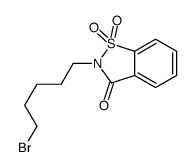 CAS#:104622-00-6
CAS#:104622-00-6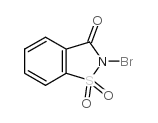 CAS#:35812-01-2
CAS#:35812-01-2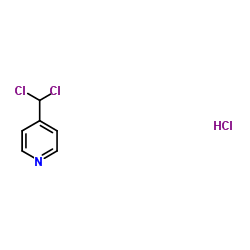 CAS#:3278-14-6
CAS#:3278-14-6 CAS#:35511-14-9
CAS#:35511-14-9 CAS#:35511-15-0
CAS#:35511-15-0 CAS#:36322-90-4
CAS#:36322-90-4 CAS#:22716-43-4
CAS#:22716-43-4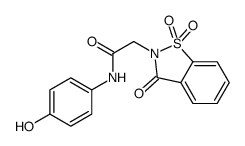 CAS#:182502-68-7
CAS#:182502-68-7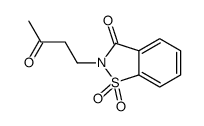 CAS#:20158-91-2
CAS#:20158-91-2
